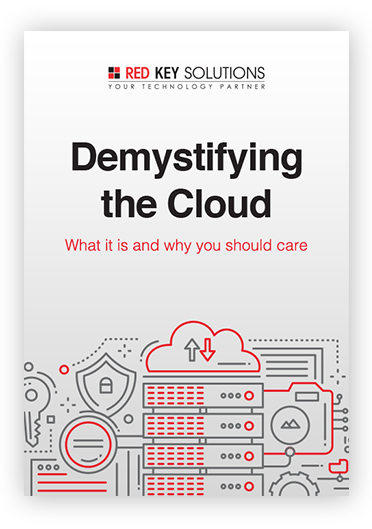
Challenges of a multi-cloud environment
Multi-cloud strategies are increasing in popularity. RightScale’s 2018 State of the Cloud Report found that 81% of enterprises are using multiple public or private clouds. And on average, they are using almost five different cloud services. What’s more, research firm IDC has predicted that 90% of enterprises will be using multiple cloud services and platforms by 2020.
But before you jump into the multi-cloud frontier, it’s important to note that despite the potential benefits, a multi-cloud environment also introduces its own unique set of challenges.
#1. Managing different portals, processes, and vendor tools
A multi-cloud strategy enables organizations to deploy different environments for every critical business application, but in doing so, adds several layers of complexity. Each cloud vendor deployment has its own portals, APIs, and processes that companies need to manage. This requires you to visit each provider’s portal separately. Even something as seemingly simple as managing user access can be complicated if different cloud providers have different password policies or authentication measures.
To mitigate the complexity, omit cloud options that require significant reconfiguration. Standardize your tools and processes and use a multi-cloud management (MCM) platform so you can purchase, deploy, monitor, and manage your cloud services across multiple providers from a single portal.
#2. Controlling costs
It’s so easy to lose track of which cloud applications are running, where, and how much these cost you in multi-cloud environments. In fact, 40% of respondents of a CIO survey do not know how much their business is spending on cloud services in total. This lack of cost visibility and control can easily result in significant overpayment.
Budget consolidation and optimization can be challenging since every cloud environment has its own billing system, pricing model, and payment options. But with the right management solutions, such as hiring a cloud cost analyst or a managed multi-cloud provider, you can track your cloud spend, consolidate billing, provide an application-specific cost analysis, and accurately forecast costs.
#3. Lack of skills
IT experts who can work across multiple cloud platforms are difficult to find and command higher salaries, so companies looking to harness multi-cloud strategies must be prepared to make the necessary investments to hire new professionals, train internal staff, or partner with a managed IT services provider (MSP) with a proven track record of multi-cloud expertise. And since cloud platforms and best practices evolve rapidly, you have to be ready to continuously retrain your staff.
Integrating automation and artificial intelligence (AI) into your multi-cloud monitoring tools can also help companies manage the growing complexity and hyperdynamism of multi-cloud environments.
#4. Compliance
When employing different cloud providers, make sure that each one meets your industry’s compliance standards like the Health Insurance Portability and Accountability Act (HIPAA), Payment Card Industry Data Security Standard (PCI DSS), and Sarbanes-Oxley Act (SOX). Failing to do so can result in hefty regulatory fines, data loss, and damaged brand reputation. Compliance can be tricky even in a single-provider environment, so it’s not hard to imagine how a multi-cloud environment complicates matters.
To curb this issue, make sure to thoroughly screen your cloud providers to ensure they can meet your compliance requirements. You can also consider the help of cloud services brokerages (CSBs) to find your best fit. They are experts at designing, deploying, and managing cloud solutions capable of meeting any government compliance mandate.
#5. Security
Multiple cloud platforms expose a company to a wider range of possible vulnerabilities and attacks. As the number of cloud services adopted grows, the difficulty of monitoring the data flows becomes increasingly challenging. Thus, extra effort is required to gain effective security. Businesses need to implement tools that can stop known and unknown threats in the cloud, on any device accessing data, and in real time to maintain full visibility and control over their information.
Even if your chosen cloud vendors have top-notch protocols and tools in place, your company’s security ultimately remains your responsibility. That’s why it’s vital for your IT staff to thoroughly discuss security requirements and have a plan of action should there be a security breach or data loss.
Complex IT strategies call for expert help
Managing a multi-cloud strategy is more complex than a single-cloud approach, but with proper planning and implementation, the business benefits can significantly outweigh the challenges. Many of the potential issues can be prevented even before adoption if organizations plan well, select the right cloud providers, and implement their strategies correctly.
To ensure your company’s smooth transition to the multi-cloud world, it’s best to partner with an MSP like Red Key Solutions. We have over a decade of experience helping businesses define, refine, execute, and optimize their cloud strategies. Schedule your consultation with us today!
Download our free eBook!
Interested in moving to the cloud? Gain more background information on how it works and why you need it by reading our free eBook: Demystifying the Cloud



